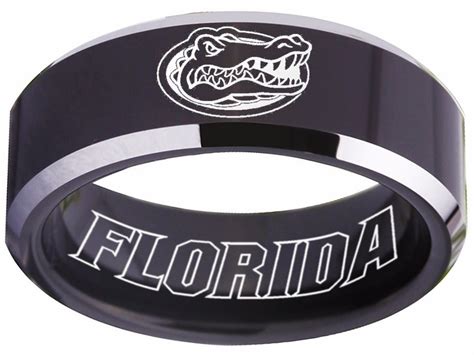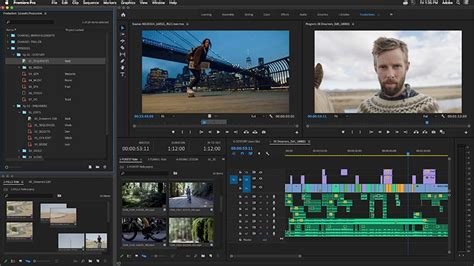Force and motion for android
Author: v | 2025-04-23

Download Force and Motion for Android latest version for Android. Force and Motion for Android latest update: Febru

Force and Motion for Android for Android - Free download and
The Android platform provides several sensors that let you monitor the motionof a device.The sensors' possible architectures vary by sensor type: The gravity, linear acceleration, rotation vector, significant motion, step counter, and step detector sensors are either hardware-based or software-based. The accelerometer and gyroscope sensors are always hardware-based. Most Android-powered devices have an accelerometer, and many now include agyroscope. The availability of the software-based sensors is morevariable because they often rely on one or more hardware sensors to derive theirdata. Depending on the device, these software-based sensors can derive theirdata either from the accelerometer and magnetometer or from the gyroscope.Motion sensors are useful for monitoring device movement, such as tilt, shake, rotation, orswing. The movement is usually a reflection of direct user input (for example, a user steering acar in a game or a user controlling a ball in a game), but it can also be a reflection of thephysical environment in which the device is sitting (for example, moving with you while you driveyour car). In the first case, you are monitoring motion relative to the device's frame of referenceor your application's frame of reference; in the second case you are monitoring motion relative tothe world's frame of reference. Motion sensors by themselves are not typically used to monitordevice position, but they can be used with other sensors, such as the geomagnetic field sensor, todetermine a device's position relative to the world's frame of reference (see Position Sensors for moreinformation).All of the motion sensors return multi-dimensional arrays of sensor values for each SensorEvent. For example, during a single sensor event the accelerometer returnsacceleration force data for the three coordinate axes, and the gyroscope returns rate of rotationdata for the three coordinate axes. These data values are returned in a float array(values) along with other SensorEventparameters. Table 1 summarizes the motion sensors that are available on the Android platform. Table 1. Motion sensors that are supported on the Android platform. Sensor Sensor event data Description Units of measure TYPE_ACCELEROMETER SensorEvent.values[0] Acceleration force along the x axis (including gravity). m/s2 SensorEvent.values[1] Acceleration force along the y axis (including gravity). SensorEvent.values[2] Acceleration Download Force and Motion for Android latest version for Android. Force and Motion for Android latest update: Febru Force and Motion for Android application contains 21 of the most commonly used formulas pertaining to Force and Motion. DescriptionThis is a 175 page set that is fabulous for teaching force and motion! Includes over 15 hands on experiments with recording sheets!! Lots of worksheets and posters too! This is perfect for first, second, and third graders!✅Save $$$$$$ by purchasing this as part of my SCIENCE BUNDLE!✅There are SO many activities, worksheets, and booklets included! In this set, you will receive:⭐18 Posters (force, magnetic, non-magnetic, attract, repel, push, pull, gravity, direction, motion, friction, speed, position, spin, roll, slide, & direction vocabulary)⭐20 Mini Posters⭐32 Vocabulary Match Up Cards (small)⭐32 Vocabulary Match Up Cards (large)⭐11 Page Force and Motion Book & Answer Keys⭐6 Page Force and Motion Flip Book⭐10 Graphic Organizers⭐6 Pages of Pocket Chart Sorting Cards {Push & Pull}⭐8 Pages of Pocket Chart Sorting Cards {Magnets}⭐3 Magnet Activities with Recording Sheets⭐3 Force Activities with Recording Sheets⭐3 Friction Activities with Recording Sheets⭐4 Motion Activities with Recording Sheets and Foldables⭐4 Gravity Activities with Recording Sheets⭐15 Force and Motion Worksheets, Review, and TestMaterial list and teacher directions are also included. Answers sheets are included too!Search Key Terms:| first | second | third | force | motion | force and motion | station | stations | centers | sort | review | science | test | experiments | experiment | printable | printables | magnet | magnets | gravity | speed | push | pull | direction | position | magnetic | nonmagnetic | spin | roll | slide | friction |Comments
The Android platform provides several sensors that let you monitor the motionof a device.The sensors' possible architectures vary by sensor type: The gravity, linear acceleration, rotation vector, significant motion, step counter, and step detector sensors are either hardware-based or software-based. The accelerometer and gyroscope sensors are always hardware-based. Most Android-powered devices have an accelerometer, and many now include agyroscope. The availability of the software-based sensors is morevariable because they often rely on one or more hardware sensors to derive theirdata. Depending on the device, these software-based sensors can derive theirdata either from the accelerometer and magnetometer or from the gyroscope.Motion sensors are useful for monitoring device movement, such as tilt, shake, rotation, orswing. The movement is usually a reflection of direct user input (for example, a user steering acar in a game or a user controlling a ball in a game), but it can also be a reflection of thephysical environment in which the device is sitting (for example, moving with you while you driveyour car). In the first case, you are monitoring motion relative to the device's frame of referenceor your application's frame of reference; in the second case you are monitoring motion relative tothe world's frame of reference. Motion sensors by themselves are not typically used to monitordevice position, but they can be used with other sensors, such as the geomagnetic field sensor, todetermine a device's position relative to the world's frame of reference (see Position Sensors for moreinformation).All of the motion sensors return multi-dimensional arrays of sensor values for each SensorEvent. For example, during a single sensor event the accelerometer returnsacceleration force data for the three coordinate axes, and the gyroscope returns rate of rotationdata for the three coordinate axes. These data values are returned in a float array(values) along with other SensorEventparameters. Table 1 summarizes the motion sensors that are available on the Android platform. Table 1. Motion sensors that are supported on the Android platform. Sensor Sensor event data Description Units of measure TYPE_ACCELEROMETER SensorEvent.values[0] Acceleration force along the x axis (including gravity). m/s2 SensorEvent.values[1] Acceleration force along the y axis (including gravity). SensorEvent.values[2] Acceleration
2025-04-04DescriptionThis is a 175 page set that is fabulous for teaching force and motion! Includes over 15 hands on experiments with recording sheets!! Lots of worksheets and posters too! This is perfect for first, second, and third graders!✅Save $$$$$$ by purchasing this as part of my SCIENCE BUNDLE!✅There are SO many activities, worksheets, and booklets included! In this set, you will receive:⭐18 Posters (force, magnetic, non-magnetic, attract, repel, push, pull, gravity, direction, motion, friction, speed, position, spin, roll, slide, & direction vocabulary)⭐20 Mini Posters⭐32 Vocabulary Match Up Cards (small)⭐32 Vocabulary Match Up Cards (large)⭐11 Page Force and Motion Book & Answer Keys⭐6 Page Force and Motion Flip Book⭐10 Graphic Organizers⭐6 Pages of Pocket Chart Sorting Cards {Push & Pull}⭐8 Pages of Pocket Chart Sorting Cards {Magnets}⭐3 Magnet Activities with Recording Sheets⭐3 Force Activities with Recording Sheets⭐3 Friction Activities with Recording Sheets⭐4 Motion Activities with Recording Sheets and Foldables⭐4 Gravity Activities with Recording Sheets⭐15 Force and Motion Worksheets, Review, and TestMaterial list and teacher directions are also included. Answers sheets are included too!Search Key Terms:| first | second | third | force | motion | force and motion | station | stations | centers | sort | review | science | test | experiments | experiment | printable | printables | magnet | magnets | gravity | speed | push | pull | direction | position | magnetic | nonmagnetic | spin | roll | slide | friction |
2025-04-09Ramp (motion I). Observe the motion of the ball. Sketch the trajectory of the ball on an enlargement for motion I . On the enlargement, draw arrows to show the directions of ( 1) the acceleration of the ball and (2) the net force on the ball while it is on the ramp (i.e .• in region II). I pram·~ wedge 0------II I III Top view, motion 1 B. Release the ball at an angle to the ramp as shown (motion 2). Observe the motion of the ball. Sketch the trajectory of the ball on an enlargement for motion 2. On the enlargement, draw arrows to show the directions of (1) the acceleration of the ball and (2) the net force on the ball while it is on the ramp (i.e., in region II). Starting wedge I II III Top view, motion 2 Tutorials in Introductory Physics McDermott. Shaffer. & P.E.G., U. Wash. ©Prentice Hall, Inc. First Edition, 2002 Mech Changes in energy and momentum 46 C. How does the direction of the net force on the ball in motion 2 compare to the direction of the net force on the ball in motion 1? Explain. Is the direction of the acceleration of the ball in motion 2 consistent with the fact that the ball speeds up and its trajectory curves? Explain. D. How does the change in kinetic energy of the ball in motion I compare to the change in kinetic energy of the ball in motion 2? I.
2025-03-29